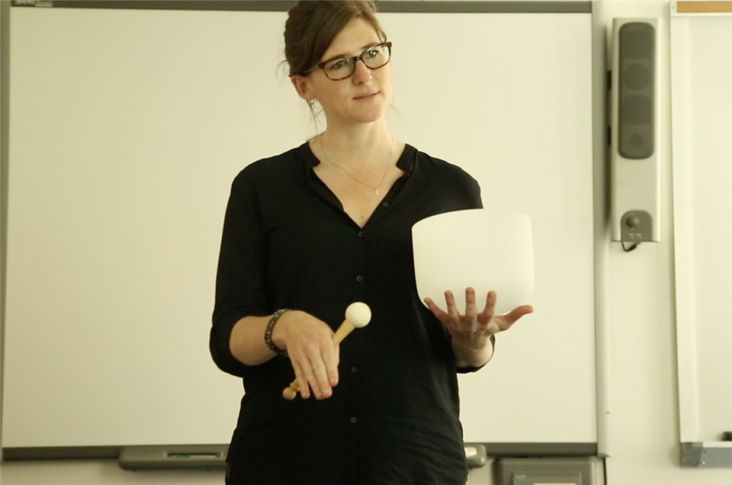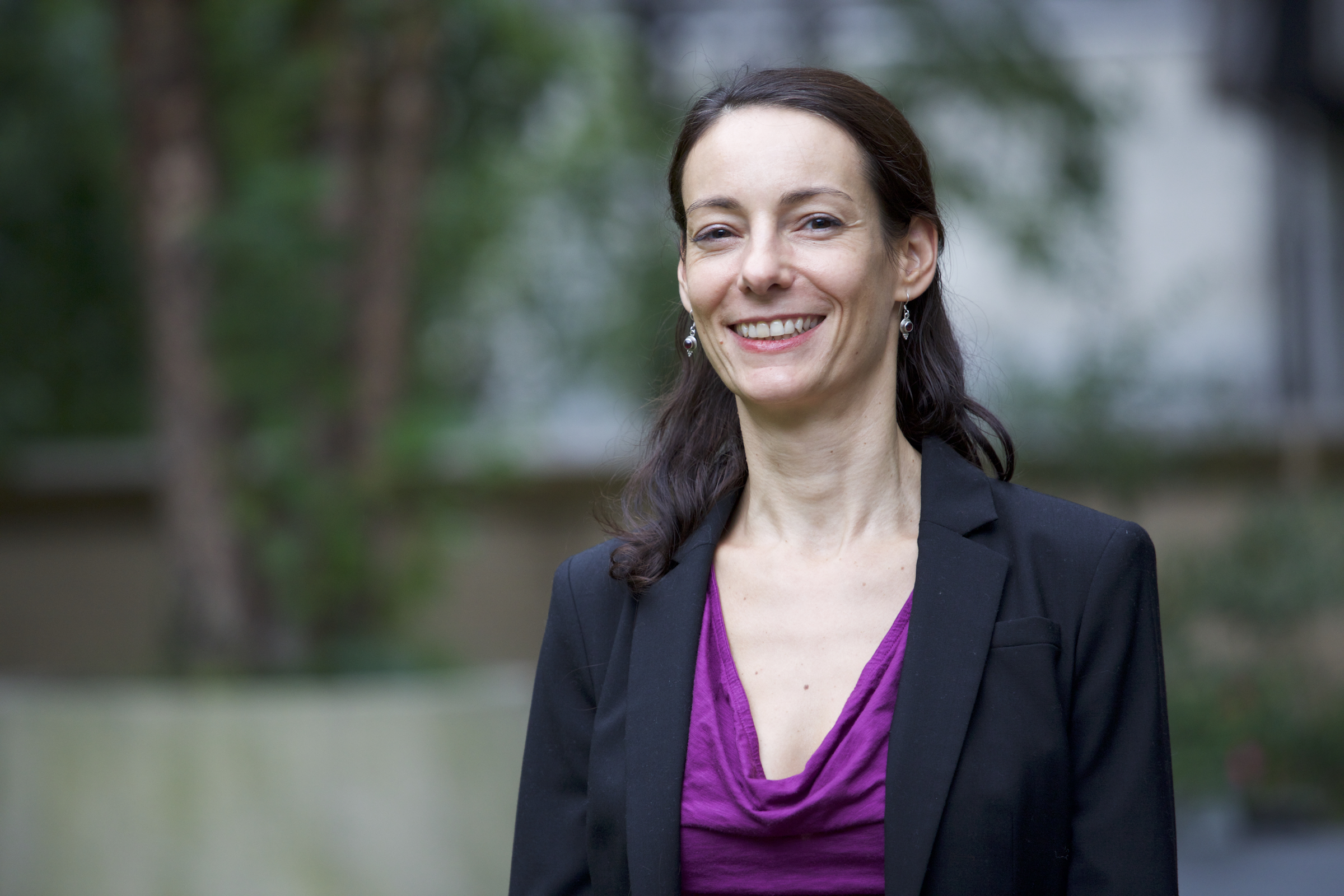Jamie, your primary role is as an English Teacher, but you also have been developing and implementing mindfulness at the Lycée for three years now, offering students brief sessions with their peers during the school day. I would like to ask you five simple questions, for those who still might not be familiar with this practice.

Q: Is mindfulness different from meditation? What do we hope for students to gain from this activity?
Mindfulness is different from meditation in its intention. It is an attention practice, and is therefore an end in itself. The goal is to give the mind a few minutes of rest, reduce the impact of toxic levels of stress on students, teachers, and parents, and, as a result, to aid students in emotional regulation, centering, and the development of empathy. We do this by reducing the stimuli- our neurological input and output- for a few minutes per day. Many of us engage in activities mindfully, whether it be running, cooking, or listening. But practicing it intentionally in fact increases the strength of our executive function capacity, and improves the relationship with our internal regulatory systems. We can do this by focusing our attention intentionally for a few minutes. Mindfulness has its roots in contemplative practice, but as it has been clinically proven to be neurologically beneficial in psychological and sociological applications, is completely secular. It encourages intra-personal awareness and acceptance, and heightens our mental acuity. Many mindfulness practices center around focusing the mind on listening, breathing or an intentional positive thought. It is simple, and yet challenging at the same time, which is why it helps to have a little guidance.
Q: School is a place to think: how does mindfulness, which asks to “let thoughts go”, help students to better learn?
It is impossible to stop the flow of thoughts: according to some researchers, we experience about 70,000 thoughts per day. Additionally, in our lives outside of school, our attention is constantly solicited. We make hundreds more micro-decisions per day than we did before the advent of smartphones and applications. Often, in digital communications, we are acting impulsively, and are almost always engaged in a transaction. Attention is like a muscle. It can be trained .It can grow weaker or stronger with practice. As adolescence is a time of tremendous neurological growth, it is an essential time to equip students with the tools they need to make healthy decisions with how they are training their focus. As we go through a process called pruning, skills we use cause us to develop neurological pathways that last for years into adulthood.
Studies with increasingly large sample sizes show an increase in mental acuity, a decrease in conflict in the classroom, and a decrease in negative emotional patterns associated with anxiety. Therefore, mindfulness practice is a logical complement to any social and emotional learning program. The essential work of learning to regulate our well-being within better enables us to care for and engage with the world around us in a spirit of constructive problem-solving.
Q: If you are worried or stressed out, isn’t a mindfulness three-minute practice just a way to postpone the worries and the stress which will come back no matter what?
Good question! Mindfulness is not about putting a dam in a river; it is more like choosing to tune the radio to a channel that is calm and centering. We are built to be mentally active, and so trying to stop the flow of thoughts can be counterproductive. We could imagine that we are going to explore a landscape with a flashlight. All we are doing is observing, and bringing the attention back to a focal point, in a nonjudgmental way. As far as a sense of urgency and being pulled away from productivity is concerned, I highly recommend practicing with a notebook nearby — this is what I do– in case something urgent comes up. Mindfulness is never productive if it feels like a cage or a trap, but in order for it to work, it does need to be a time for undisturbed and uninterrupted observation, and this requires some stillness. It can be helpful to remember that there is no way to do it wrong. We are simply observing what is happening within, in the moment. We work with what arises, non-judgmentally. If what is happening is a feeling of urgency, then we need to allow ourselves to take care of that. And as we get better at doing this within our minds, we get better at managing the unexpected waves outside and around us as well, navigating them with calm and skill.
Q: Can students practice mindfulness on their own when not at school?
Absolutely. It can be helpful for students to attune the learning instrument prior to tackling homework, or as a break between tasks. Some students have taught their families, while others have gone on to teach to other students at the Lycee or at their universities. However, mindfulness is a structure, not a band-aid. We need to have practiced it for a few weeks for it to have a constructive effect counteracting stress.
Q: Can any teacher at school lead a mindfulness activity?
Any teacher can learn mindfulness, but it requires familiarity and practice. It is recommended that we have some experience with mindfulness so that we can most helpfully aid students in navigating what arises. Additionally, it is extremely important that it not become a disciplinary tool. There are many resources for training and development. Teachers can request a drop-in visit from a member the faculty cohort, or one of our student ambassadors. There are workshops offered by NYSAIS, the Garrison Institute, Mindful Schools, or Bank Street. There are many resources available at the CDI, and on the Mindful Schools website. One important thing to remember is that mindfulness is offered in a non-hierarchical way: it is a person-to-person transmission. We are happy to answer any questions.
As a continuation of our Morning Mindfulness offering last year, we are offering an Open Mindfulness Lab starting Wednesday, October 18th, and every Wednesday thereafter from 4:00-4:30 pm in S207B, with rotating facilitators. All are welcome, regardless of experience. Several faculty members and senior students have gathered to form a cohort, who will meet regularly to discuss practices, questions, and implementation. I am grateful to continue to support the ways in which mindfulness can be used as a to support learning and social and emotional well-being.
About the Author :
Professeure agrégée de Lettres Modernes et titulaire d’un Master professionnel de Psychologie clinique, Nathalie Anton a été membre pendant trois ans d’une équipe en charge de prévenir la violence en milieu scolaire dans l’académie de Paris. Elle est aussi l’auteur de l’ouvrage L’Art d’enseigner, paru aux éditions Ixelles en août 2012. Quand elle n’est pas en classe, Nathalie aime courir à Central Park et sillonner la ville à vélo l’été et se réchauffer dans les salles de spectacles l’hiver.


